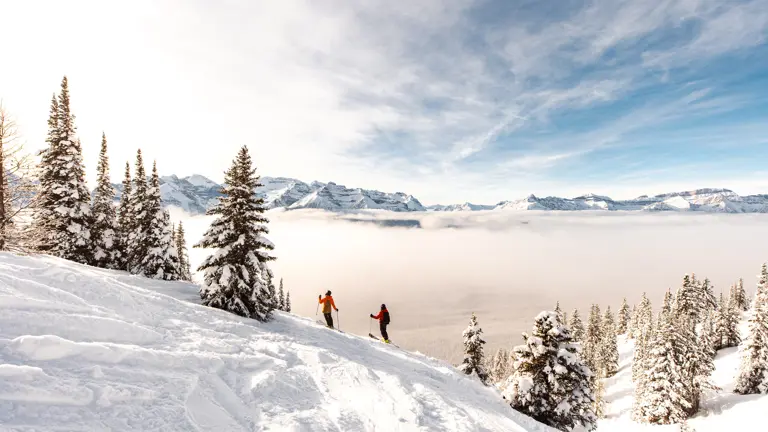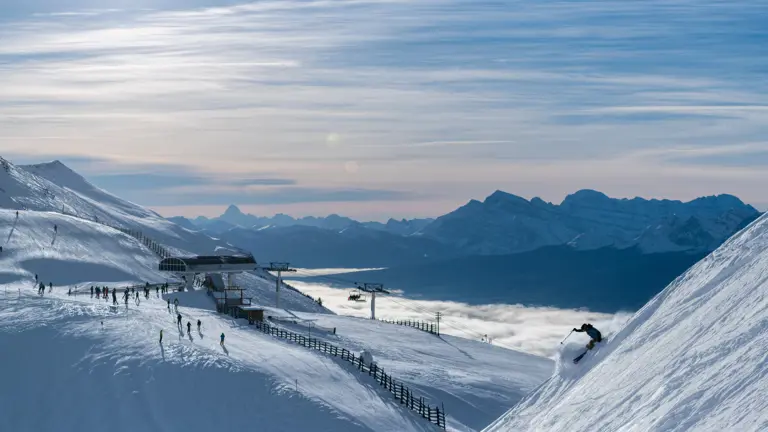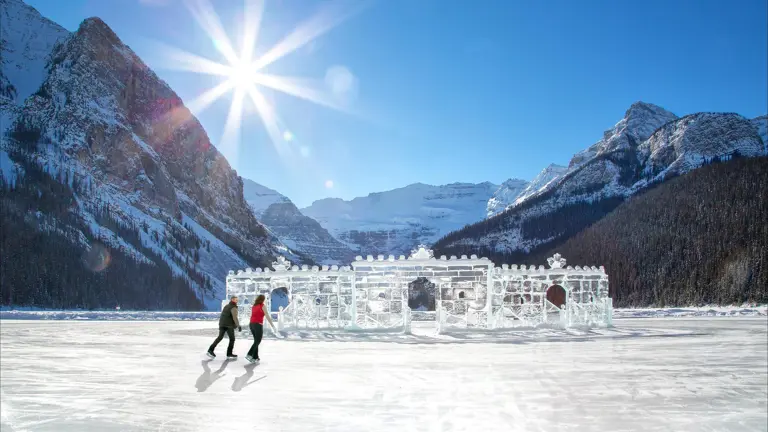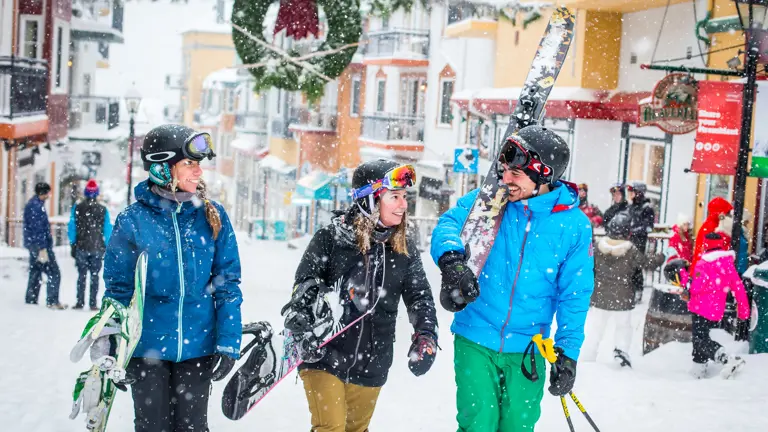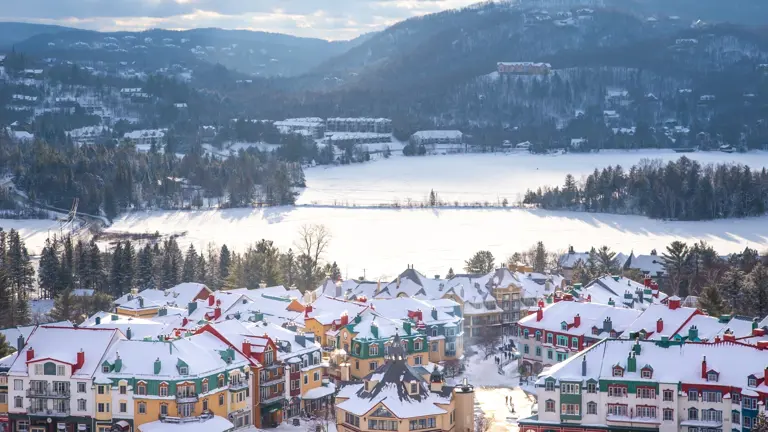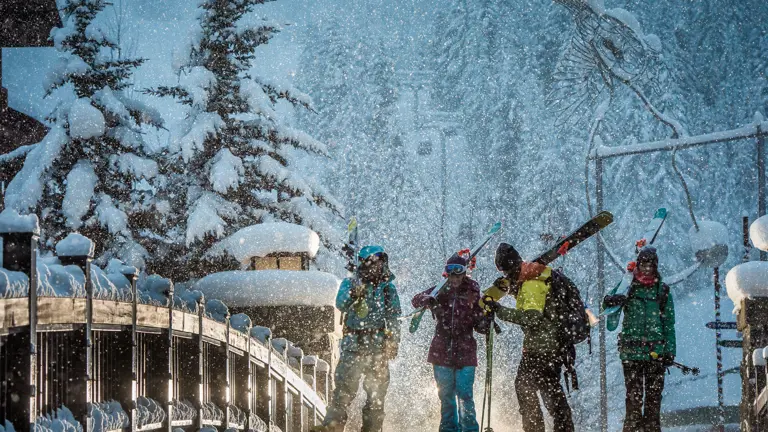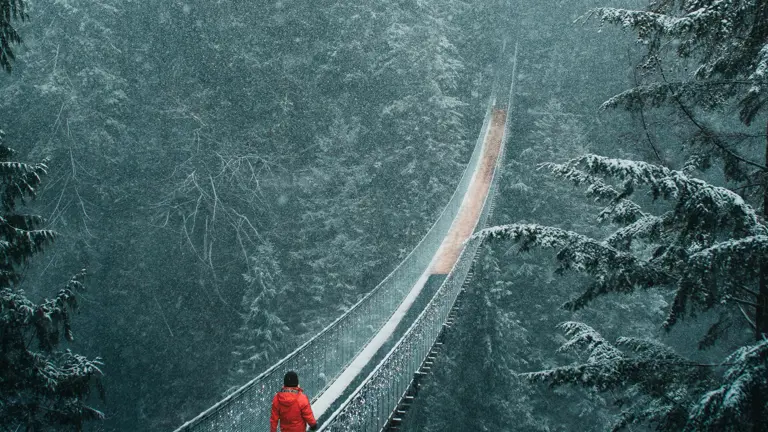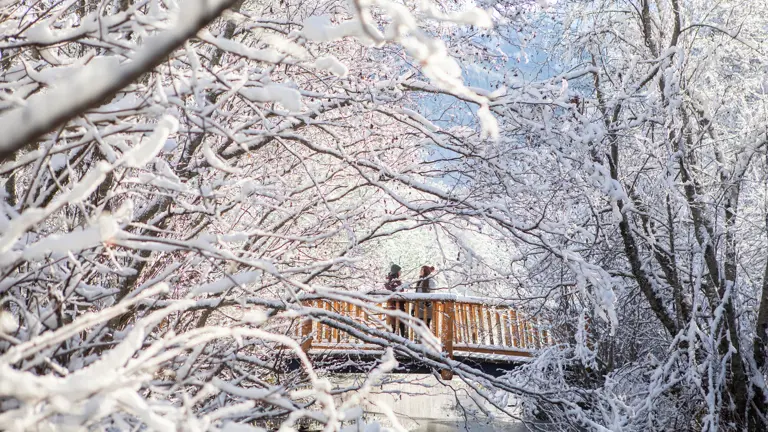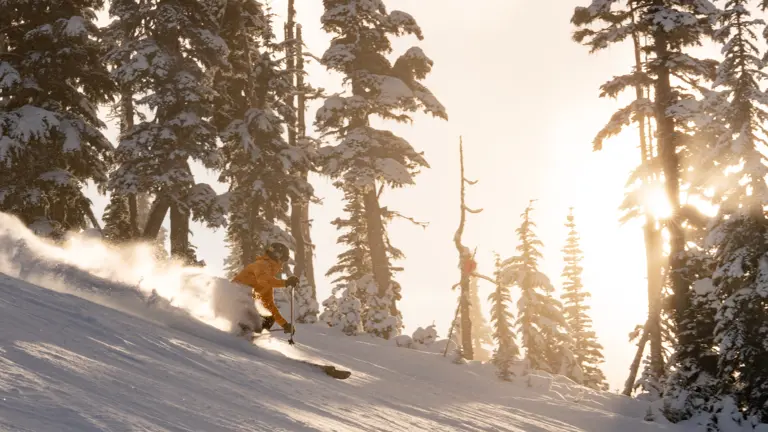Canada at a glance
- English, French
- Canadian Dollar (CAD)
- Time zone GMT-8
Ski Canada for exhilarating high altitude skiing, glacier skiing and snowboarding
- World class ski resorts
- Ski in a National Park
- Deep powder snow
Why ski in Canada
Canada is the ultimate bucket-list ski destination. The Rockies pack a powder punch and the scenery lives up to the hype and is as spectacular as everyone says. The hotels are superb and spread across National Parks and world class ski resorts. What’s more, the ski season is long, the slopes are often quiet and the Canadian hospitality is unrivalled.
The season is long in Canada and, being so far north, the ski resorts have incredible snow records and good snow conditions are pretty much assured.
The high altitude and air in Banff National Park mean that Banff and Lake Louise have snow unlike any you will find in other resorts. The air makes it much more powdery and ideal for snowboarders.
Whistler is well known for its excellent snow record, receiving an average of 10 metres of snow annually. The resort has one of the longest ski season in North America and the three combined glaciers give you ideal snow conditions.
Awarded the best family ski resort award in 2023, Whistler is a great resort for families. There are lots of opportunities for little ones on the mountains, and Whistler's specially designed family zones include the amazing Whistler Kids Snow School, enchanted Tree Fort and Magic Castle - guaranteed to put smiles on everyone’s faces.
Nicknamed the 'Disneyland of winter ski', Mont Tremblant is a charming resort in the French province of Québec with colourful houses and quaint cobbled streets. You will find plenty to do including dog sledding, lake ice skating, and horse drawn sleighs. Québec is known for its excellent food too, which uses a blend of French and Canadian cuisines.
Alberta’s Banff and Lake Louise are unbeatable when it comes to scenery and surrounding nature. Both located inside Banff National Park, a UNESCO World Heritage Site, these two resorts have some of the most dramatic scenery in the world. There's nothing quite like skiing through the Canadian Rockies with the backdrop of Banff National Park or ice skating on Lake Louise itself.
Whistler is a fantastic place to start your adventure on the snow. With nearly 50 easy and gentle slopes across the resort, you have plenty of time to master that snowplough before moving on.
Mont Tremblant is another great option for those looking to find their ski legs. The resort has a brilliant ski school and the Versant Sud area, on the south side of the mountain, provides plenty of wide, open beginner slopes.
Canada’s most famous resort, Whistler, in the Coast Mountain Range, is consistently voted the best and most popular resort in all of North America. It has something for everyone, from powder bowls for snowboarders to designated slow zones for beginners.
Banff is part of the Ski Big 3 which covers three different mountains in one lift pass, Banff Sunshine, Lake Louise, and Mt Norquay. If you complete the Trifecta Challenge by skiing all three, you can earn yourself a free pint of beer from the SkiBig3 Adventure Hub. The downtown area is a traditional Canadian village with plenty of bars, restaurants, and coffee shops.
The Best of Canada
Ski Resorts in Canada
What do you want to see in Canada?
Canada Insider Guides
See all Insider GuidesFAQ and Travel Information
Inghams ski holidays are perfect for those who love skiing in the great outdoors. Pick your base from our handpicked collection of the best ski destinations across Europe and North America, from over 70 resorts across 8 countries: Andorra, Austria, Canada, France, Italy, Switzerland, Norway and Finland From the thrill-seekers to the après skiers, our expert team will be with you at every turn.
Some of the top rated resorts in Canada are Lake Louise, Banff and Mont Tremlant. However one of the most popular resorts is Whistler (which consistently wins North Americas best ski resort) due to the twin peaks of Whistler Blackcomb, connected by a gondola.
Due to Canada's northerly location, the winter snowfall across its resorts holds a good track record, so you will find plenty of snow during the ski season. Banff and Lake Louise have very fluffy dry snow as it's located so far from the sea - unbeatable on powder days.
There are many hotels to choose from when looking at a ski holiday in Canada. The Moose Hotel & Suites and The Fox Hotel & Suites in Banff - great location in the town, near to all the bars, restaurants and shops.
